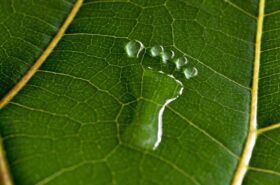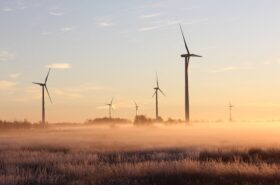Let’s be real, most Westerners think insects look gross (which is basically true). But we also eat some ‘gross’ things already:
- Jelly Sweets
- Collagen powder
- Hot dogs
- Liver Pate




Unpopular opinion. We like these ‘gross’ things because:
- they are mixed in with other ingredients
- we have socially accepted them (think of being fed these as kids)
- they actually do taste good (once the stigma is removed)
Many people are surprised to find out that insect protein foods will most likely look like this:





Why Are We Even Thinking About Eating Insects?
Animal protein (like beef) has a negative impact on the environment. Insect protein is substantially more eco-friendly. If you are committed to reducing your annual carbon footprint, paying attention to everything you eat is crucial. The process through which the foods we eat get to our table has a huge impact on the environment. You might have probably heard that eating plant products is better for the environment than animal products. This all goes back to the process these foods go through before getting to our tables.

For those that want to add proteins and fats to their diet, eating insects is way better for the environment than animal products. This might sound surprising, especially if it is your first time hearing about it. However, it is a fact that is backed up with plenty of research. If you want to know why eating insects is better for the environment than animal proteins, this article is for you.
We will take you through some key reasons why choosing insects is the way to go if you want to lower your carbon footprint.
How The Food We Eat Affects Our Carbon Footprint

Before discussing why insects are a better alternative than eating animal products, let’s first briefly explain how the type of food we eat affects our carbon footprint. Most of us eat food that is either from plants or animal products. These foods go through various processes before being ready for consumption and brought to our nearest grocery store or supermarket.
For the case of plants, the processes involved include planting seeds or seedlings, taking care of the growing plants, and harvesting them when they are ready. The final step is transporting them to the market, grocery store or supermarket for sale. Each of these steps involves carbon emissions that result from the water used and energy produced from fossil fuels if at all some of the processes involved mechanization.
Of course, transportation also involves burning fossil fuels since most of the cars and tracks used to transport plant products use diesel or petrol. If there is extra processing, more greenhouse gases are emitted from the energy used and the exhaust fumes released during specific manufacturing processes.

Making animal products ready for consumption usually involves taking care of them. This includes providing them with enough food and drinking water, plus medication. Availing this water and food also results in carbon emissions since they usually involve using some energy. Transportation and processing of animal products also result in more greenhouse gas emissions since it involves burning fossil fuels.
Overall, all the food we eat affects our carbon footprint, whose amount depends on the processes used to make this food ready.
Why Eating Insects Will Lower Your Carbon Footprint
The growth of insects requires fewer resources

Most insects grow in the wild and do not need as much care and resources as animals. Such resources include water, land, and energy required for the growth process. As we shared earlier, animals need water, food, and medication during their growth process, which results in huge amounts of carbon emissions.
For instance, caring for cows requires providing them with several liters of water and KGs of food for a couple of years before you can enjoy their products. Studies have shown that one kilogram of beef (beef herd) produces an average of 99.48 kilograms of carbon dioxide equivalent. On the other hand, bringing an equal amount of insects to your table leads to 75% fewer carbon emissions than most animal products.
That means eating insects over beef could lower your food-related carbon footprint by up to 75%. This is a significant difference that most people don’t think about while choosing what foods to eat.
Insects can provide an equal amount of protein.

Besides requiring fewer resources, some insects can provide you with an equal amount of proteins as animal products like meat and milk. A study by Runtastic showed that insects contain values of between 9.96 and 35.2 grams of protein per 100 grams, compared with 16.8-20.6 grams of meat. Of course, the protein density varies depending on the insects you choose.
Some of the insects with the most proteins include crickets, certain ant species and mealworms. You get more proteins per serving from such insects than several other insect options out there. Of course, your choice will also depend on what you find tastier. Protein and fat calorie content is not the main factor that people consider when choosing which insects to eat.
In fact, most people don’t know the food exact nutrient compositions of these insects. However, the major takeaway that you should get from this is the fact that most insects can provide an equal amount of protein as animals. So, if you eat animal products to get proteins, then know that insects can also provide a similar amount.
Insects are part of our virtuous eco-cycle

Most insects usually feed on the waste products from agriculture and some food manufacturing processes. This eliminates the greenhouse effect created by these waste products if left in our landfills. Studies show that landfills generate over 20% of the global anthropogenic methane emission and are one of the leading two sources of greenhouse gases.
When insects feed on these wastes, this percentage can be lowered, which is a net positive for our environment. Our goal is to ensure that more insects can continue eating these wastes in order to reduce their negative impact on our environment. On the other hand, all the food that most animals eat is fresh, unlike a few animals like pigs that eat waste foods.
Insects are a viable alternative source of proteins

As the world population continues to grow, more food will be needed to ensure no one dies of hunger. Having foods with proteins will be very important since proteins are among the essential food nutrients we all need. To ensure enough supply of protein-based foods, it is important to have alternative sources besides plants and animals.
Insects are excellent protein alternatives since they don’t require many resources compared to plants and animals. Most insects live in the wild and feed on waste foods, so they don’t need us to provide them with water and medication like we usually do with animals and plants. This will be even more important in the future as the demand for these resources continues to get high than ever before.
Most insects don’t require extra processing.

Eating processed foods such as sausages and mist meat increases our carbon footprint since these foods require extra energy when being transformed from their natural state. Most of the time, insects are not processed, which is a net positive for our environment because it eliminates the potential emissions that could be generated from the energy used in processing them.
Some of the insects can simply be dried if you want to consume them over more extended periods. Drying can even be done under the sun, which doesn’t lead to greenhouse gas emissions. So, if your concern regarding eating insects was about their durability, drying is the answer. You can dry your insects and eat them later in the future whenever you need to.
They are much healthier.

Another reason for you to consider switching from animal proteins to insects is your health. Here are some facts; beef has saturated fat, and overconsumption is linked to an increased risk of heart disease, colorectal cancer and type 2 diabetes. On the hand, insects are rich in the healthier Omega-3 and 6 fatty acids, which we usually get from fish.
Overall, insects are a much better source of protein since they lead to fewer emissions and are also healthier than animal proteins like beef. For people who consider health benefits before choosing the food to eat, eating insects should be a no-brainer.
How To Get Started With Insect Protein (Without Grossing Yourself Out)

If you have never eaten insects, adopting them at a late age can be challenging. However, there are several ways to get started if you are committed to reducing or totally eliminating animal proteins from your diet. In this section, we will cover some of the easiest ways to integrate insects into your diet.
Purchasing animal protein from animals that feed on insects

First, you can start with eating protein from animals or birds that feed on insects. One of the major sources of greenhouse gas emissions in managing animals is the production of the foods these animals feed on. Studies show that 45% of the greenhouse gas emissions during animal production are generated from the production of their feeds.
Before domestication, a significant percentage of chicken’s diet was comprised of insect proteins. So, instead of feeding your poultry on plants or animal-based foods, you could instead let them feed on insects. Eating such chicken is a much better decision for the environment than eating chicken that feeds on the regular food cultivated in the garden.
Add their powder to your meals.

Most are afraid of eating insects because of how they look. However, this phobia can be eliminated if the same insects are smashed into a powder and including it in your recipe. Cricket powder is one of the easiest sources of bug protein to integrate into your diet since it can be eaten as any other protein powder that we usually add to our foods.
You can buy insect powders from your local grocery stores or eCommerce sites that sell foods. Making these powders is also pretty easy, so you try it out if you can’t find them in your grocery stores or supermarket. If you are interested, check out this article; it will take you through all the steps to create insect powder from home.

The good news is that you don’t need any specialized equipment to create these powders. Chances are high that most of the tools and equipment you will need are already in your kitchen, so you won’t have to buy anything.
Eat them as a salty snack alternative to chips or sausages.

Insects such as grasshoppers and crickets are tasty snacks that you can add to your meals or eat as starters. Most of these insects have natural fats, so you don’t have to use cooking oil while frying them. This makes them much healthier than most snacks usually prepared with oil. So, eating insects as snacks is healthier and more friendly to the environment than eating meat-related snacks.
Final Thoughts
At this point, it should be clear to everyone why eating insects over animal products is an eco-friendly choice that we should all make to lower our annual carbon footprint. The good news is that you don’t necessarily have to eat the insects directly to create an impact. The last section of the article covered some of the ways you can directly or indirectly integrate insects into your diet.
If you find it uncomfortable to eat insects directly, you could start by eating proteins from animals fed on insects. There is also an option of eating the insects in powder form, eliminating the phobia some people get from eating them directly.



